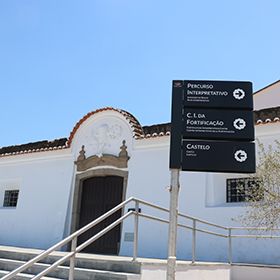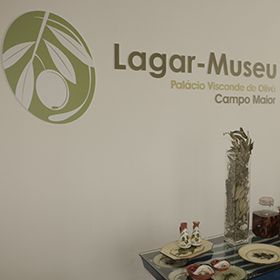Campo Maior

Located in the Alentejo, near the Spanish border, Campo Maior can be found in the middle of a vast plain stretching over more than 50 kilometres – a settlement known to the Romans as "Campus Major". Nowadays, quiet streets and whitewashed houses are home to a welcoming population.
When the community unites with a shared purpose, it brings to life one of the country's most unique festivals, known as "Festas do Povo ou das Flores" (Festival of the People or of the Flowers). In fact, the event happens only when the community decides to come together, producing thousands of paper flowers to imaginatively decorate over a hundred streets. Acknowledging the unique nature of the celebration, UNESCO designated it as Intangible Cultural Heritage of Humanity. A vibrant spectacle of colour and joy, it draws thousands of visitors, yet has no fixed date or regular schedule (the last edition was held in 2015). You can explore its origins and history at the "Casa das Flores" (House of Flowers (the Festas do Povo Interpretive Centre) or by visiting Campo Maior in August during the "Jardim de Papel" (Paper Garden event), which offers a glimpse into the magic of the “Festas do Povo”, or People's Festivals.

Casa das Flores (House of Flowers) © Câmara Municipal de Campo Maior
There’s so much more to explore in Campo Maior. Visitors can start at the castle, founded by the Moors. Its strategic location near the border made it a key stronghold in the region, playing a vital role in the defending Portuguese lands. Perched on a high vantage point, it provides a stunning view of the town and its surrounding landscape. Visitors can then delve deeper into the town’s history by visiting the "Centro Interpretativo da Fortificação Abaluartada" (Bulwark Fortification Interpretive Centre), which brings to life events and figures that shaped the town’s past.
Campo Maior Castle © Câmara Municipal de Campo Maior
Despite the town’s ancient roots, most of the buildings in its historic centre were built after the 18th century, as a devastating explosion in the stronghold’s magazine in 1732 destroyed nearly two-thirds of the medieval town. The town was rebuilt after this tragic event, including several remarkable buildings worth exploring. Highlights include the Mannerist-style "Igreja Matriz" (Mother Church), dedicated to Our Lady of Expectation (16th–17th centuries), the 18th-century Church of St John the Baptist, the Museum of Sacred Art, which houses an extensive collection gathered from various churches in the municipality, and the unique Chapel of Bones. Also worth a visit is the Santa Beatriz da Silva House-Museum dedicated to the first Portuguese saint, born in Campo Maior and founder of the Order of the Immaculate Conception.
Campo Maior © Câmara Municipal de Campo Maior
A visit to the "Centro de Ciência do Café" (Coffee Science Centre), located within the largest roastery in the Iberian Peninsula, provides insight into the history of this industry in the municipality, from the “smuggling days” to the modern era. Other regional products, such as wine, are of particular note here, with the Adega Mayor well worth a visit – a remarkable building designed by architect Siza Vieira. Olive oil is also produced here and celebrated in the Viscount of Olivã Palace "Lagar-Museu" (Press-Museum) – an establishment that displays the various stages of olive oil production, starting with the olive harvest.
Nearby, about 10 km from Campo Maior, lies the village of Ouguela, where the Castle retains the characteristics of a border stronghold and where you can also visit the Governor's House and Cistern. For leisure, nothing beats the Caia reservoir, located about 5 km from Campo Maior. This expansive body of water, the largest in the Portalegre district, provides excellent opportunities for a variety of water sports or simply relaxing while enjoying the stunning views.











 Explore
Explore 
 Remember and Share
Remember and Share 


